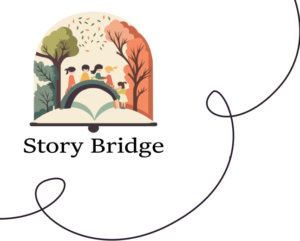Recordable storybooks and traditional storybooks are both popular options for parents and caregivers looking to introduce young children to the joy of reading. But which is better for toddlers?
In this article, we’ll take a closer look at recordable storybooks and traditional storybooks and discuss their respective benefits for toddlers’ early childhood education.
Understanding the Importance of Storybooks for Toddlers’ Development
Before we dive into the differences between recordable and traditional storybooks, it’s important to understand why storybooks are so important for toddlers’ development. Storybooks help build language skills, improve cognition, and foster a love of reading.
Reading to toddlers is a crucial component of their early childhood education, as it can set the stage for success in school and beyond.
The Advantages of Recordable Storybooks for Toddlers
Recordable storybooks offer a number of advantages for toddlers’ early childhood education. These books come with a sample pre-recorded message on them so the reader has an idea of how they can record their own message on the book. Here are some specific benefits of recordable storybooks:
- Personalized storytelling: Recordable storybooks allow parents and caregivers to record their own voices reading a story, adding a personal touch to the reading experience. This can help strengthen the bond between the child and the caregiver, even when they’re not physically together. Check out this amazing long-distance grandparenting post for more ideas on how recordable storybooks can help keep grandparents connected to their grandkids.
- Interactive books: Recordable storybooks often include interactive elements like sound effects and music, making the reading experience more engaging and immersive for toddlers. For more tips on using recordable storybooks for bedtime stories, see this bedtime stories with recordable storybooks post.
- Technology in education: Recordable storybooks introduce young children to technology in a fun and educational way. This can help prepare them for the increasingly digital world they will grow up in. Storybridge is a great resource for personalized storybooks for kids and grandparents that use technology to create engaging and interactive reading experiences.
- Parent-child bonding: Recording a story for a child can be a special bonding experience for parents and caregivers, especially those who are separated from their children during the day. This can help improve parent-child relationships and create lasting memories. For more on how recordable storybooks can create memories, see this memories with recordable storybooks post.
The Benefits of Traditional Storybooks for Toddlers
While recordable storybooks have their advantages, traditional story books also offer a number of benefits for toddlers. Here are some reasons why traditional storybooks are still an important part of early childhood education:
Visual learning: Traditional storybooks often have illustrations that can help toddlers learn to associate words with images, improving their comprehension and visual learning skills. For more tips on using traditional storybooks for language development, see this long-distance grandparenting post on using books to connect with grandkids.
Tangible reading experience: Traditional storybooks offer a tactile experience that can be particularly engaging for young children who are still exploring the world through touch and play.
For more ideas on DIY projects for toddlers, see this recordable storybooks for grandparents post that includes creative ways to use recordable storybooks to engage toddlers in hands-on activities.
The Role of Recordable Storybooks in Toddlers’ Early Education
Recordable storybooks can play an important role in toddlers’ early education by promoting language development, imagination, and critical thinking skills. By engaging toddlers in interactive and personalized storytelling, recordable storybooks can help build a foundation for a lifelong love of reading and learning.
Which is Better for Toddlers: Recordable Storybooks or Traditional Storybooks?
Recordable storybooks are often the better choice for toddlers due to their interactive and personalized nature. These books offer a more engaging and immersive reading experience, with the option to record a personal message from a caregiver and include interactive elements like sound effects and music. This can help hold the toddler’s attention and make the story more engaging.
Additionally, recordable storybooks can introduce young children to technology in a fun and educational way, helping to prepare them for the digital world they will grow up in. While traditional storybooks are still an important part of early childhood education, recordable storybooks can provide a unique and valuable reading experience for toddlers.
Conclusion
Storybooks are a valuable tool for toddlers’ early childhood education. Whether you choose to use recordable storybooks, traditional storybooks, or a combination of both, the important thing is to make reading a part of your child’s daily routine. By reading with your child and fostering a love of storytelling, you can set them on a path towards lifelong learning and success.

